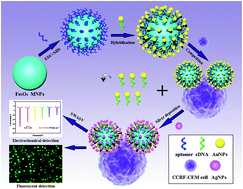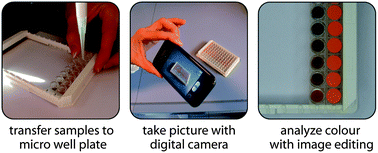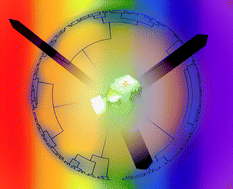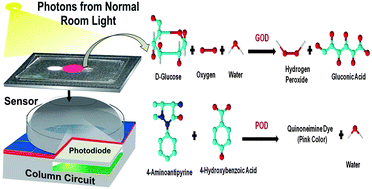Take a look at these new HOT articles just published in Analyst! These papers will be free to read for the next two weeks. Click on the links below:
A new turn-on fluorescent chemosensor based on diketopyrrolopyrrole (DPP) for imaging Zn2+ in living cells
Guanjun Zhang, Haiying Li, Shiming Bi, Longfeng Song, Yunxiang Lu, Liang Zhang, Jianjun Yu and Limin Wang
Analyst, 2013, Advance Article
DOI: 10.1039/C3AN00873H
Separation of metalloproteins using a novel metal ion contaminant sweeping technique and detection of protein-bound copper by a metal ion probe in polyacrylamide gel electrophoresis: distribution of copper in human serum
Shingo Saito, Mitsuyoshi Kawashima, Hiroki Ohshima, Kazuki Enomoto, Makoto Sato, Hajime Yoshimura, Keitaro Yoshimoto, Mizuo Maedad and Masami Shibukawaa
Analyst, 2013, Advance Article
DOI: 10.1039/C3AN01107K
High pressure nanoelectrospray ionization mass spectrometry for analysis of aqueous solutions
Md. Matiur Rahman, Mridul Kanti Mandal, Kenzo Hiraoka and Lee Chuin Chen
Analyst, 2013, Advance Article
DOI: 10.1039/C3AN00699A
Introducing novel amorphous carbon nanoparticles as energy acceptors into a chemiluminescence resonance energy transfer immunoassay system
Zhenxing Wang, Hongfei Gao and Zhifeng Fu
Analyst, 2013, Advance Article
DOI: 10.1039/C3AN01177A
The global identification of tRNA isoacceptors by targeted tandem mass spectrometry
Collin Wetzel and Patrick A. Limbach
Analyst, 2013, Advance Article
DOI: 10.1039/C3AN01224G
Enhanced imaging of developed fingerprints using mass spectrometry imaging
M. J. Bailey, M. Ismail, S. Bleay, N. Bright, M. Levin Elad, Y. Cohen, B. Geller, D. Everson, C. Costa, R. P. Webb, J. F. Watts and M. de Puit
Analyst, 2013, Advance Article
DOI: 10.1039/C3AN01204B
Photonic crystal enhanced microscopy for imaging of live cell adhesion
Weili Chen, Kenneth D. Long, Meng Lu, Vikram Chaudhery, Hojeong Yu, Ji Sun Choi, James Polans, Yue Zhuo, Brendan A. C. Harley and Brian T. Cunningham
Analyst, 2013, Advance Article
DOI: 10.1039/C3AN01541F
















